Barrel Spotlight: One Mash Bill, Two Unique Paths
Welcome back to the Brindiamo Barrel Spotlight, our weekly email series highlighting the barrels, distilleries, and market dynamics shaping today’s...
3 min read
 Matt Breese
:
Apr 29, 2025 5:14:03 PM
Matt Breese
:
Apr 29, 2025 5:14:03 PM
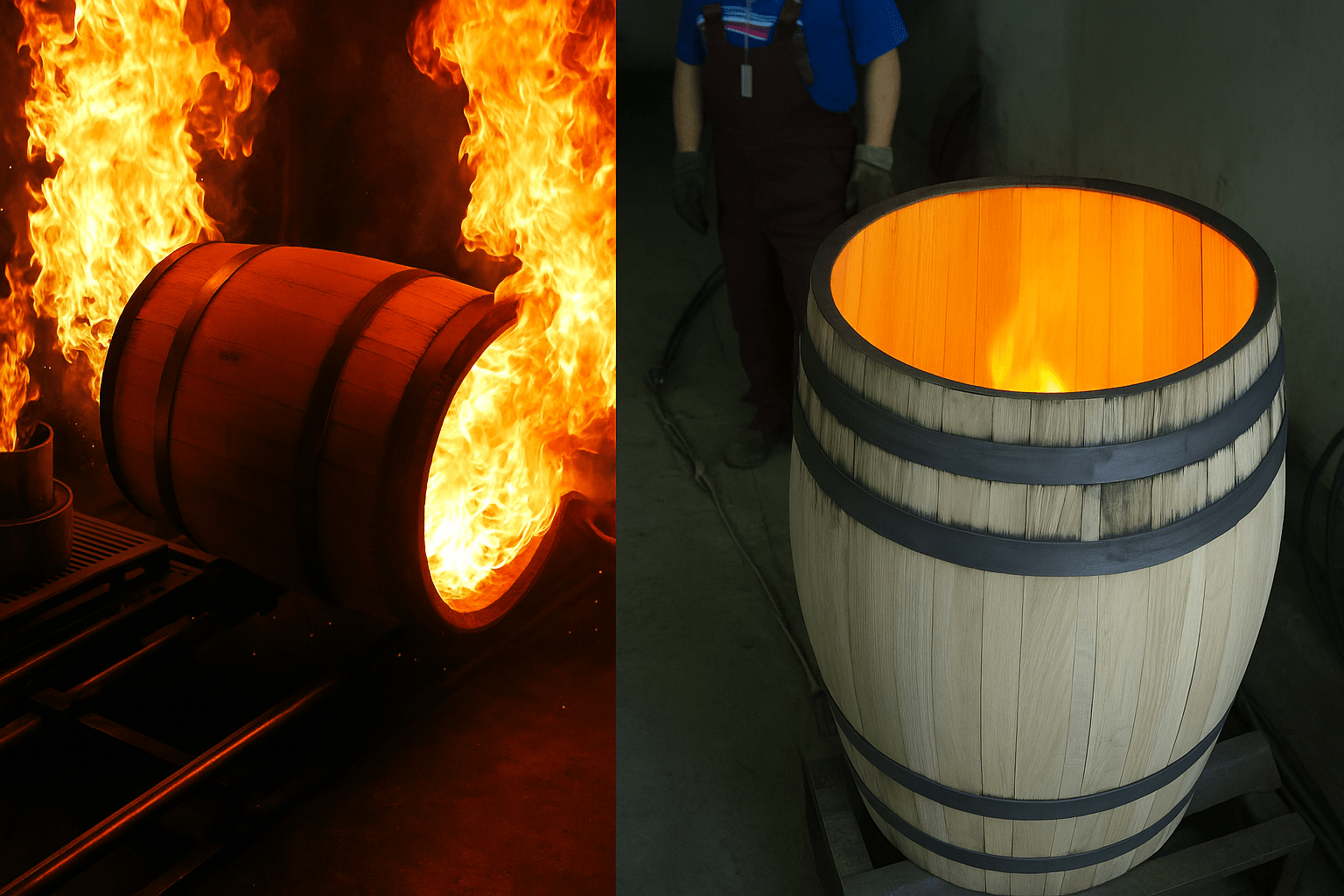
When we think about how whiskey gets its flavor, most people immediately point to the type of oak or the age of the cask. But an unsung hero of flavor lies in how the barrel’s interior is treated with fire. Before any spirit touches the wood, coopers either toast the staves with gentle heat or char them with open flame—two techniques that create very different flavor journeys.
This blog expands on John Angus’s excellent post and infographic about the chemistry behind toasting and charring. Here, we’ll dive deeper into the science and the craft that shape the whiskey in your glass.
Toasting: Gentle Heat for Sweet, Layered Flavors
Imagine a cooper’s workshop. A barrel is slowly heated over a brazier, never seeing direct flame. Instead, a warm glow gently toasts the inside of the cask. As the wood heats up, its chemistry transforms. Lignin, the structural "glue" in wood, begins to break down, releasing aromatic compounds like vanillin—the very same molecule responsible for the smell of vanilla beans. Alongside vanillin, syringaldehyde is also released, adding subtle floral and almond-like notes.
At the same time, the wood’s hemicellulose, a natural sugar, starts to caramelize. This reaction creates compounds like furfural, which delivers rich caramel and almond aromas, and 5-hydroxymethylfurfural (5-HMF), adding smooth toffee sweetness. These reactions happen inside what coopers call the “red layer”—a toasted section of the wood just beneath the surface, rich with flavor compounds.
For a behind-the-scenes look at one of our cooperage partners bringing this red layer to life, check out our Kelvin Cooperage Partner Spotlight. You can also explore our recent cooperage blog for more on how craftsmanship and chemistry intersect inside the barrel.
Different levels of toasting create different flavor impacts:

Light Toast: Gentle heat starts to release vanillin for soft vanilla notes, while syringaldehyde adds delicate floral hints. Whiskies aged in lightly toasted barrels often have soft, honeyed aromas without any smoky character.
Medium Toast: More heat intensifies the production of furfural and 5-HMF, introducing richer caramel, almond, and toffee notes. A medium toast gives the spirit a deeper, rounder sweetness layered with subtle nutty and pastry-like flavors.
Heavy Toast: Prolonged toasting deepens the breakdown of lignin and sugars. Syringaldehyde intensifies, bringing bold coffee and dark chocolate notes, while furfural develops into richer, darker caramel tones. Heavy toasts create whiskies with a roasted, mocha-like depth and more robust oak character.
Through toasting, the barrel becomes not just a vessel, but an active flavor partner, layering sweetness, complexity, and warmth into the whiskey.
Charring: Intense Flame for Bold, Smoky Depth
Now picture a different scene: a blast of flame roaring through the barrel, blackening the wood in a matter of seconds. Charring is a much more aggressive process. It sets the inside of the cask on fire for a short time, creating a thick, cracked layer of charcoal.
This char layer does two things. First, it introduces smoky flavor compounds. When the wood burns, lignin doesn’t just release vanillin—it breaks down into smoky phenols like guaiacol (woody smoke), syringol (sweet smoke), cresols (spicy, tar-like smoke), and phenol itself (earthy, medicinal smoke). These compounds are responsible for the smoky, earthy, and sometimes medicinal notes found in many whiskies.
Second, the charcoal layer acts like a natural filter. As the spirit matures, it seeps into the char, which absorbs harsh compounds and smooths the whiskey’s finish. The thicker the char, the more filtration occurs, influencing both the flavor and mouthfeel over time.
Charring levels also dramatically affect the whiskey's final character:
![]()

Light Char: A quick flash creates a thin layer of charcoal. This introduces subtle smoky aromas from guaiacol and syringol while allowing the underlying toasted oak sweetness to remain prominent.
Medium Char: A longer flame application deepens the smoke profile. Cresols start to appear, adding a spicy, medicinal depth to the smoke. The whiskey develops richer, more complex smoky notes layered with hints of spice and charred wood.
Heavy Char: Sometimes called "alligator char" because of the cracked, scaly appearance it leaves on the barrel, a heavy char creates an intense charcoal layer. Phenol levels rise sharply, giving bold earthy, medicinal, and heavy smoke characteristics. Whiskies aged in heavily charred casks often have a robust, roasted flavor profile and a smoother mouthfeel due to the strong filtration effects of the deep charcoal.
Through charring, the barrel doesn’t just influence flavor—it fundamentally transforms the spirit, adding bold smoke, spice, and earthy intensity.
The Perfect Balance: Fire and Flavor in Harmony
Toasting and charring are two sides of the same coin. Toasting brings out the wood’s natural sweetness—vanilla, caramel, toffee, chocolate—while charring brings bold smoky, spicy, and earthy notes. Distillers carefully select the level of toast and char to craft the flavor journey they want for their whiskey.
Some whiskies lean heavily toward the sweet, dessert-like notes of a toasted barrel. Others embrace the dark, smoky depths created by heavy charring. And the most masterful examples find a balance, weaving together the warmth of caramel and vanilla with the depth of smoke and spice.
The next time you sip a whiskey, take a moment to think about the fire that shaped it. Do you prefer the soft, sweet notes of a toasted barrel or the bold, smoky character of a heavily charred one? Maybe your favorite dram strikes the perfect balance between the two.
Whatever your preference, know that behind every complex sip lies a story of oak, fire, chemistry—and the careful hands of a cooper shaping flavor through the art of heat.
👉 See the original post and infographic by John Angus.
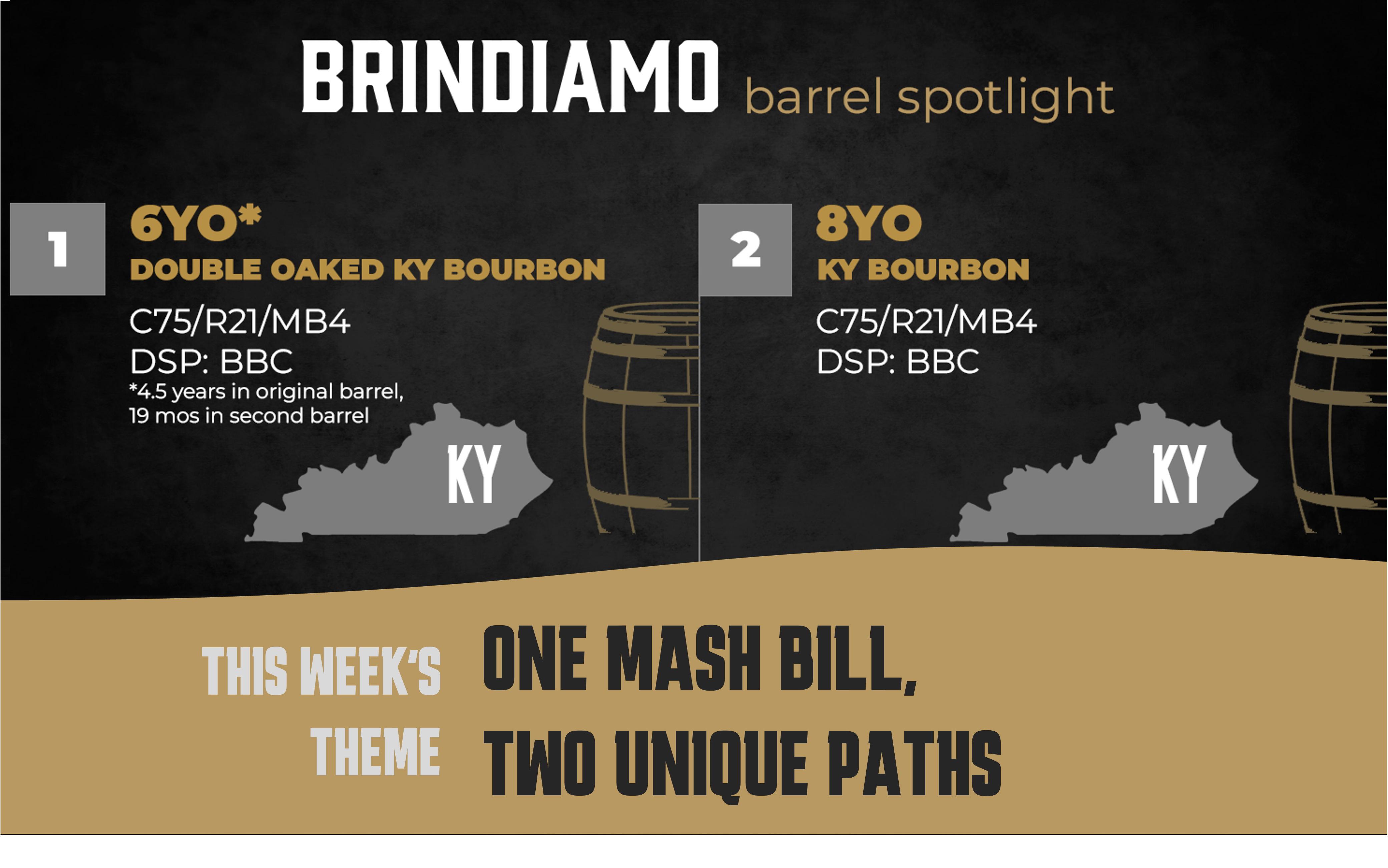
Welcome back to the Brindiamo Barrel Spotlight, our weekly email series highlighting the barrels, distilleries, and market dynamics shaping today’s...

The market for bourbon barrels is bifurcated. Over the course of the last 24 months, the conversation has shifted from how to find whiskey to how to...
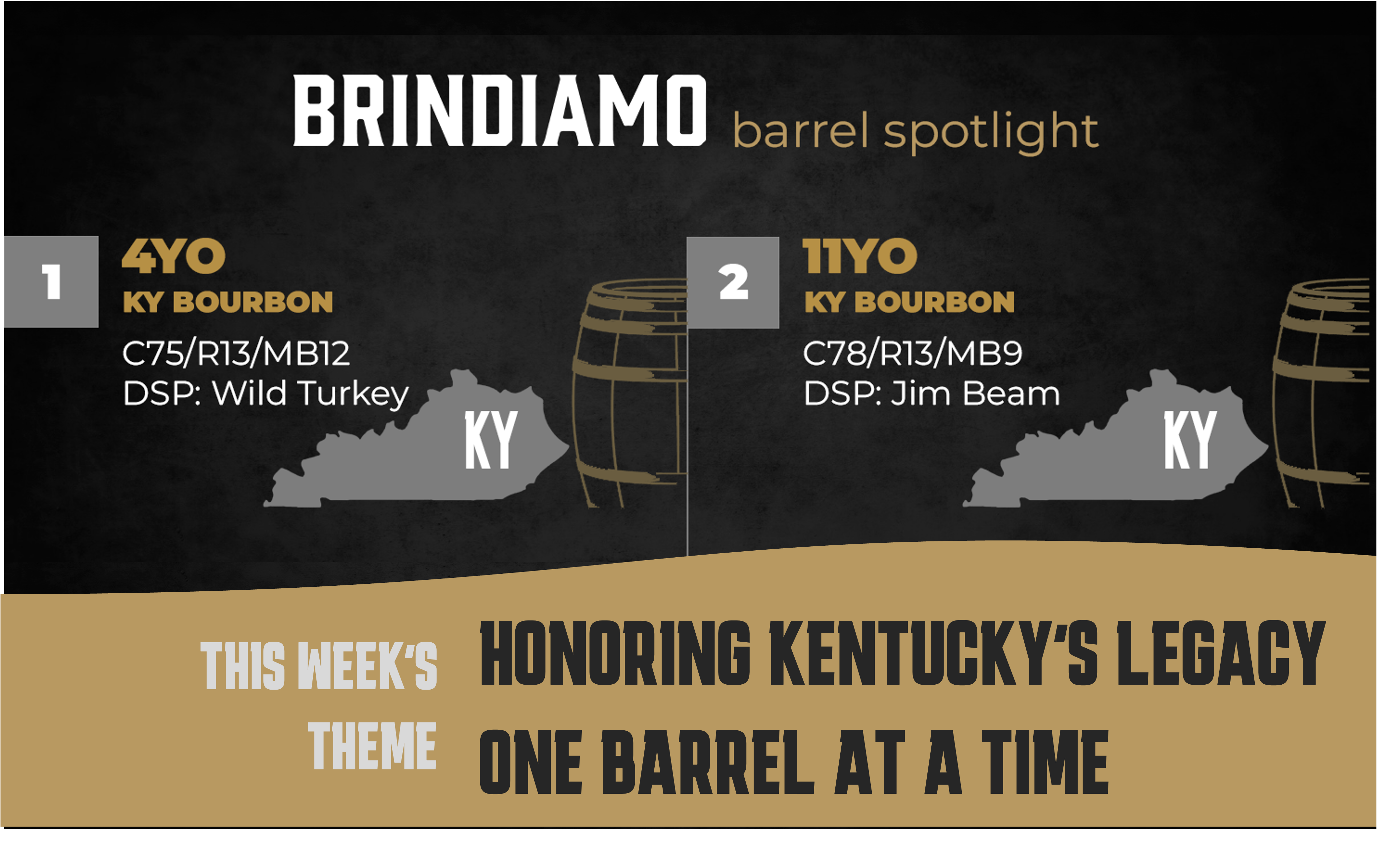
Welcome to the Brindiamo Barrel Spotlight, our weekly series celebrating the barrels, distilleries, and market dynamics shaping today’s whiskey...
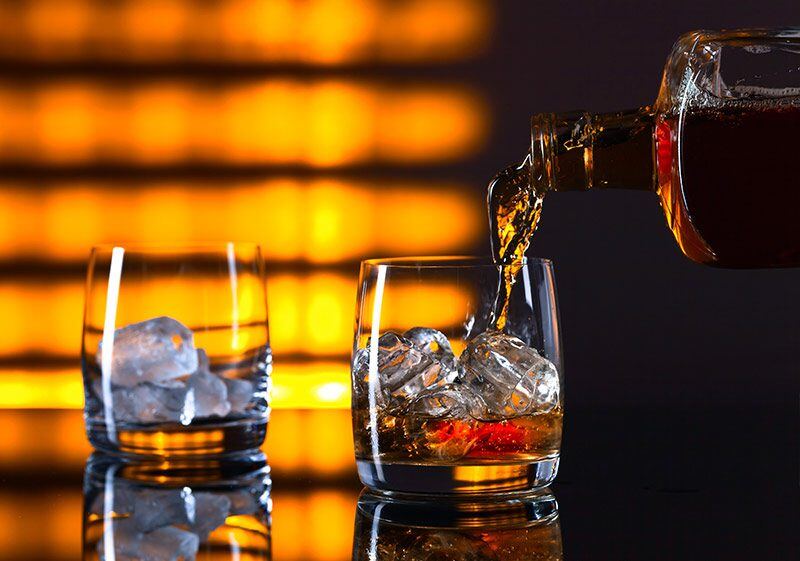
Did you know that, technically, whiskey begins its life as a beer? Before the aging process, whiskey liquor begins as water, yeasts, and malts. While...
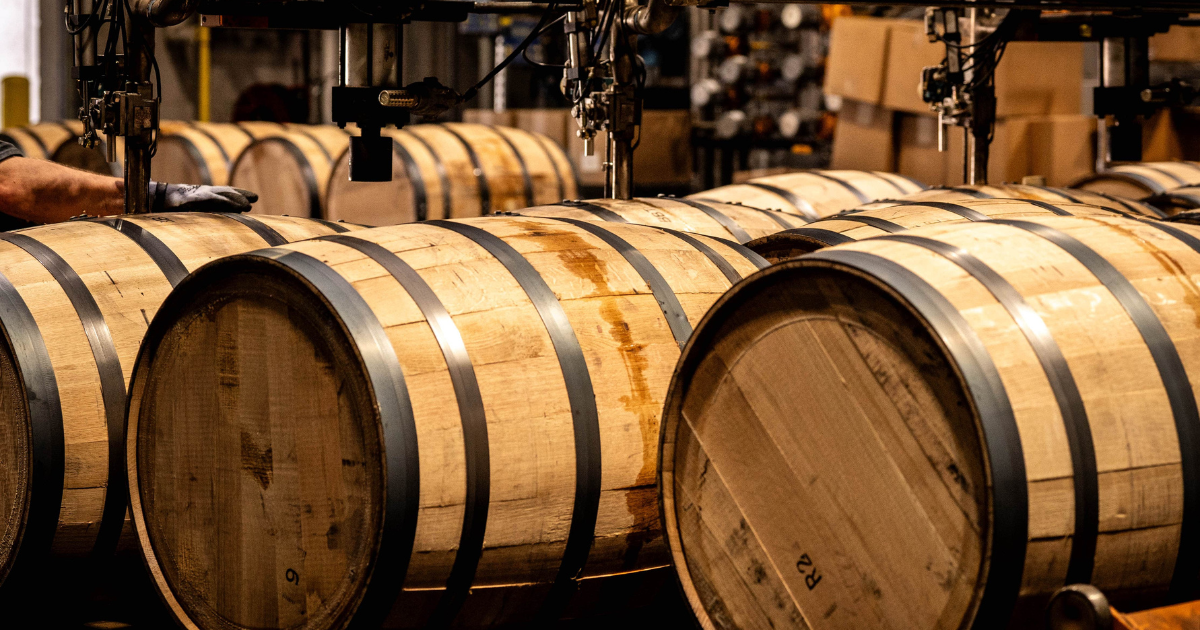
Whiskey is one of the world’s most revered spirits, but not all whiskey is created equal. Two key categories—new fill whiskey and aged whiskey—play...
.png)
One surprising aspect of the whiskey-making process is the crucial step that takes place inside a barrel. While many may anticipate a straightforward...
Join the conversation
Leave a comment below.